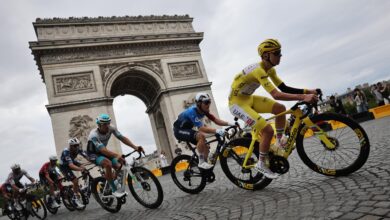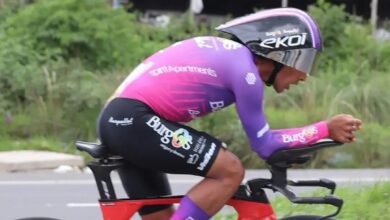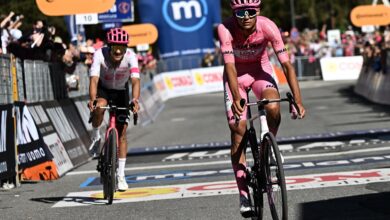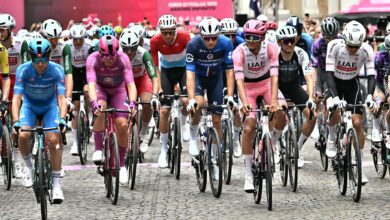Colombia Dares Italian Summits as Giro Cycling Dreams Tempt the Throne
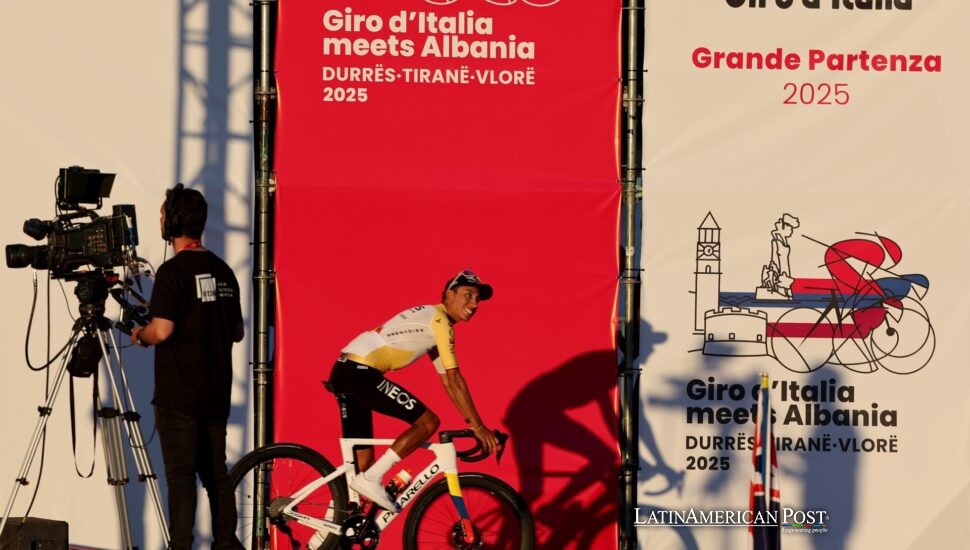
With Colombia’s Egan Bernal returning from injury and determined to derail the favorites, the 2025 Giro d’Italia promises riveting drama. Cycling fans from Latin America cheer on their riders, expecting a grand spectacle in Europe’s most unpredictable Grand Tour.
A Colombian Cyclist Renaissance
Colombia has cultivated some of the most formidable climbers in professional cycling for decades, and the 2025 Giro d’Italia serves as yet another proving ground. The country’s mountainous terrain, high altitudes, and cycling-obsessed culture form a perfect cradle for new talent. Past legends like Lucho Herrera and Fabio Parra paved the way, but the world has seen Colombian riders blossom on the biggest stages in modern times.
The pinnacle of this surge came in 2019 when Egan Bernal became the first Colombian to win the Tour de France. Two years later, in 2021, he crowned himself champion at the Giro d’Italia, further cementing Colombia’s reputation as a powerhouse. Now approaching 28, Bernal arrives at the 2025 Giro, hoping to reaffirm his status as a contender.
He’s not alone. Four other Colombians will join him: Nairo Quintana and Einer Rubio of Movistar Team, Daniel Felipe Martínez (riding under the Red Bull-BORA-hansgrohe banner), and Brandon Rivera of Team Ineos. Quintana and Bernal have already won Giro races. Rubio and Rivera want to show the next generation of Colombia. One local fan says Latin America has much love for cycling, and riders are bright figures for it.
Across Latin America, the Colombian push has an impact. Fans are excited. The cause of the excitement is a shared background in that region. Though their fellow citizens are not among the favorites this year, Colombia fans still revel in the success of Andean riders representing the continent. Hometown support might not always affect results, but it contributes to the fervor felt at roadside watch parties and in front of TV screens across Colombia.
Bernal’s Battle for Redemption
Egan Bernal starts this Giro with confidence and caution; after a brilliant early season that included claiming the Colombian national road and time trial championships, a Clásica Jaén Paraíso Interior crash sidelined him. A fractured collarbone made him miss key spring races, limiting his preparation. Only at the Volta a Catalunya did he manage to log some racing miles, performing respectably and finishing seventh overall.
By his admission, Bernal faces an uphill task. He has called Primoz Roglic (the Slovenian powerhouse) and Juan Ayuso (the rising Spanish prodigy) the clear favorites. Still, this man overcame adversity to triumph at the 2021 Giro. A collarbone injury can heal, and if his form aligns, Bernal could well surprise everyone.
Adding to the intrigue is the new kit he’ll be wearing. As the reigning Colombian champion in both road and time trials, Bernal will sport a jersey inspired by a mythical Colombian squad from decades past, weaving national history into his modern quest. With the passionate Latin American fanbase behind him, Bernal hopes to channel that energy into a successful challenge.
Also worth watching is Nairo Quintana, famously the first Colombian to seize the Giro title in 2014. Though no longer the unstoppable climber of his younger years, Quintana retains a deep reservoir of experience. Because of his skill on very steep slopes, he could perform breakaways or assist Movistar in tactical strategies. Einer Rubio will support Quintana in mountainous areas—this produces a potent dual Colombian approach inside the Spanish team.
Daniel Felipe Martínez races for Red Bull-BORA-hansgrohe. Brandon Rivera also belongs to Team Ineos. The two riders complete the Colombian representation. Both displayed skill. Martínez possesses skill in time trials and demonstrates good climbing, so he is a potential surprise contender. From Bernal, Rivera received experience. The Giro competition involves uncertainty, and either person could achieve success if a leader becomes weak.
The Stage Is Set: A Rugged, Unforgiving Giro
True to its reputation, the 2025 Giro d’Italia offers a relentlessly challenging route that suits the climbing talent of Latin American riders. Albania hosts the opening three stages, including a 13.7-kilometer individual time trial in Tirana, plus challenging climbs featuring 10% gradients. After crossing the Adriatic, the peloton ventures through southern Italy with a sprint-friendly stage, though the route quickly morphs into rugged profiles, culminating in Tagliacozzo’s uphill finale (11.9 kilometers at 5.8%).
Gravel makes a cameo, too: an early “mini-Strade Bianche” stage leads to Siena, featuring five sectors and a total of 30 kilometers of unpaved roads. These tricky conditions can shake up the standings, as mechanical mishaps and crashes often strike. For riders like Bernal and Quintana, known to handle complex terrains with finesse, it’s an opportunity to assert themselves—provided they can avoid bad luck.
Moving into the second week, a 28.7-kilometer time trial from Lucca to Pisa will weigh heavily on the general classification. Climbers who survive the test will have an advantage once the race hits mountainous territory. Medium-mountain stages follow, culminating in ascents like San Pellegrino (13.8 kilometers at 8.8%). Although these mid-range climbs might not match the epic scale of the final week, the GC (General Classification) contenders must remain vigilant against breakaway threats.
The final week arrives with typical Giro drama
The route tackles legendary passes like the Tonale (15.2 kilometers at 6.1%) and the fearsome Mortirolo (12.7 kilometers at 7.6%). An upcoming stage includes five categorized climbs, finishing on San Valentino (18 kilometers at 6.7%). Each day brings punishing gradients, altitude, and unpredictable weather—conditions Latin American climbers often relish.
The crowning set piece is the “queen stage” from Verrès to Sestriere. Along the way sits the Colle delle Finestre, an 18.4-kilometer behemoth averaging 9.2%, with eight kilometers of gravel. Named the Cima Coppi of the 2025 Giro (signifying its status as the highest climb), the Finestre offers an epic place to launch attacks—or implode under the strain. After cresting, riders still face Sestriere, an iconic Alpine test that often decides the winner.
If Bernal still harbors any illusions of conquering the GC, he must produce a performance reminiscent of his 2021 heroics. On the final day, the survivors parade into Rome, where they are feted like gladiators. That stage likely won’t affect the standings, but the spectacle of finishing in the Eternal City underscores the Giro’s flair.
Fans in Latin America, especially in Colombia, expect drama each night from the races during the coming weeks and much discussion on social media. Bernal’s recovery is an interesting story. Will he recover enough to challenge Roglic and Ayuso? Quintana could regain past performance. Martínez or Rivera may become surprising contenders.
Regardless of the results, the region’s love affair with cycling shows no signs of fading. In Colombia, watch parties will pop up across cities and rural towns, bridging social classes and ages. Families huddle around TVs in Bogotá and across the Andes, celebrating each pedal stroke made by their compatriots in Europe.
As the race marches toward its penultimate day in the Alps, one truth remains: the Giro d’Italia is as unpredictable as ever. Anything can happen with the mountainous route, inclement weather, and potential breakaways. Success at the Giro would confirm the region’s importance to bicycle racing for Colombian cycling and Latin America. Even if winning continues to be difficult, participating at the top level of competition secures the racers’ place in the sport’s history.
Also Read: Mexican Canelo Shatters Limits, Leaving Boxing World Awestruck
At the final podium ceremony in Rome, the query is if Bernal or another Colombian will be among the winners. The only certainty is that the riders from Latin America will pour heart and soul into this pursuit, carrying the hopes of a continent that cherishes cycling’s magic—and consistently dreams of pink jerseys, sensational comebacks, and heroic summits won by their own.

